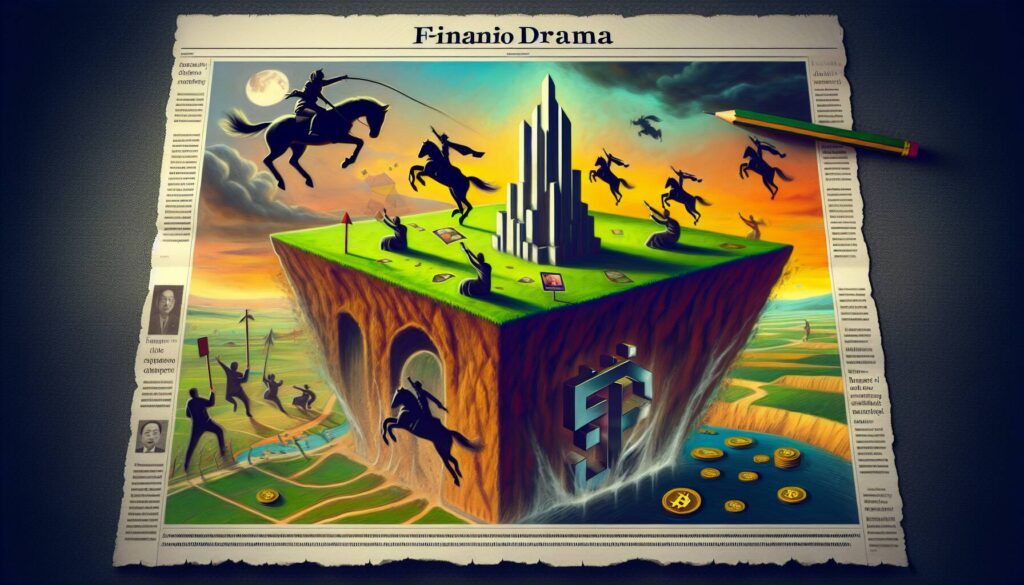As Bitcoin’s price hovers around the ,000 to ,000 mark—down more than 10% from its recent all-time high—an intriguing divide is emerging in the cryptocurrency landscape. This disparity pits the cautious traders, who are using various technical analysis tools to predict a potential downturn, against long-term investors who remain optimistic about the ongoing bull market. David Siemer, the CEO of Wave Digital Assets, highlights this stark contrast in a recent interview. With over 14 years in cryptocurrency, he notes that this division in sentiment is unprecedented.
“The traders are all worried and nervous,” Siemer stated, expressing a shared concern among those who closely monitor market fluctuations. In contrast, he reveals that long-term holders are exuding confidence, with many believing Bitcoin could reach staggering new heights—up to 0,000 within the year and potentially even million over a lifetime.
“There’s a really good chance we’ll go to 0,000 [per bitcoin] this year,” Siemer noted, emphasizing a more explosive growth trajectory over the next six months than many anticipate.
This optimism is underpinned by significant developments on the regulatory front. Countries such as the U.S., Russia, and several in Europe and Asia are reportedly preparing to embrace cryptocurrency more fully. Siemer points out that places like Japan and Singapore, where citizens exhibit strong trust in governmental decisions, may see positive implications for their private sectors as supportive policies unfold.
Fueling this surge in interest is the impressive debut of U.S. spot Bitcoin exchange-traded funds (ETFs), which have prompted competitors globally to innovate and develop new financial products. The negative impact of these ETFs on traditional Bitcoin products is evident, with many existing offerings struggling to maintain viability in a suddenly more competitive environment.
“The ETFs launched in America and they absolutely devastated all the bitcoin ETPs around the world,” Siemer remarked, highlighting the dramatic shifts in market dynamics.
Looking forward, Siemer mentions the potential for various jurisdictions to create strategic Bitcoin reserves, a prospect that would fundamentally alter the investment landscape. “Even if the U.S. doesn’t do a reserve, at least several other countries probably will,” he asserted, signifying a possible new era for Bitcoin as world governments begin to recognize its growing significance.
With the federal government already possessing nearly billion worth of Bitcoin, the stage is set for even broader adoption and integration within financial systems, possibly transforming the crypto narrative in the years to come.

The Current Landscape of Bitcoin Investment
The fluctuations in Bitcoin’s value have led to mixed sentiments among traders and long-term investors. Here are the key points regarding the current situation:
- Bitcoin Price Volatility:
Bitcoin is currently fluctuating between ,000 and ,000, down over 10% from its recent all-time high.
- Dichotomy Between Traders and Investors:
Traders are exhibiting caution and negativity, while long-term investors remain optimistic about Bitcoin’s future growth potential.
- Future Price Predictions:
Experts, including David Siemer, believe there is a significant chance Bitcoin could reach 0,000 this year, with the potential for million in the long term.
- Government Actions Favoring Crypto:
Various countries, including the U.S., Japan, and Singapore, are taking steps that could positively impact the cryptocurrency market.
- Impact of Bitcoin ETFs:
The recent success of U.S. spot bitcoin ETFs has spurred global financial institutions to innovate and compete in the crypto space.
- Potential for New Bitcoin Reserves:
Several U.S. states are considering the establishment of strategic bitcoin reserves, with the federal government already owning about billion worth of Bitcoin.
Understanding these dynamics may help readers make informed decisions regarding their investments and grasp the broader implications of crypto regulations and innovations on market stability and growth.
The Current Bitcoin Landscape: A Divergence in Perspectives
The ongoing fluctuations of bitcoin around the ,000 to ,000 mark provide a telling snapshot of the crypto market’s sentiment and reflect a broader narrative of contrasting viewpoints. On one side, you have the traders, ensnared in a web of anxiety, deploying technical analysis to brace for potential downturns. Conversely, the long-term investors remain unwavering in their optimism, anticipating a bullish trajectory for the cryptocurrency.
This dichotomy is not just a casual observation; it’s indicative of the complex dynamics shaping the market today. While traders are hedging against what some perceive as looming volatility, the long-term investors, buoyed by predictions of prices soaring to 0,000 or even million per coin, represent a steadfast belief in the fundamental value and future of bitcoin. The nuanced perspectives present both opportunities and challenges within the crypto space.
Competitive Advantages and Disadvantages
David Siemer’s insights unveil several competitive advantages for the crypto sector: a growing acceptance and interest from governments worldwide, particularly in regions like Japan and Singapore, enhances the credibility of cryptocurrencies, positioning them as legitimate financial instruments. Furthermore, the emergence of U.S. spot bitcoin ETFs serves as a catalyst, pushing financial institutions to innovate and elevate their offerings. These developments can potentially usher in new products that cater to the evolving demands of investors, thus broadening market participation.
However, these advantages do come with notable challenges. The trading community’s trepidation reflects a precarious sentiment that could dampen short-term investment. If traders remain cautious and liquidate their positions, it may create further downward pressure on bitcoin’s price, making it a precarious environment for newly committed investors. The competition stirred up by the success of American ETFs could overshadow smaller and less robust bitcoin-related products globally, leaving some firms struggling to establish themselves in this newly competitive landscape.
Beneficiaries and Potential Issues
The current climate benefits long-term holders who are resilient in their faith that regulatory advances and institutional adoption will eventually lead to higher valuations. Those with a keen understanding of macroeconomic trends and regulatory shifts, like the clients of Wave Digital Assets, are likely to navigate these turbulent waters successfully.
Conversely, the wary traders who predominantly use short-term strategies may find themselves in hot water as market volatility can lead to rapid losses if their hedging strategies do not pay off as expected. Additionally, individuals or firms lacking a thorough grasp of the intricate regulatory frameworks emerging in different jurisdictions may face complications, giving an edge to those who are well-informed and adept at strategic adaptations. In essence, this moment in the crypto sphere serves as a reminder that knowledge and adaptability are just as important as market timing in cultivating success amidst uncertainty.
















